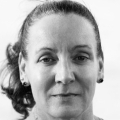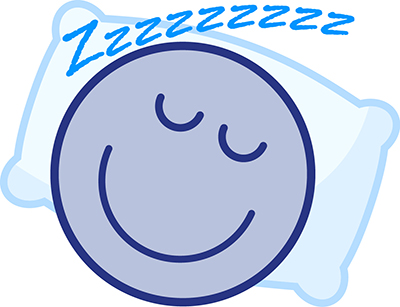How’s your sleep? Are you getting enough? Is the quality of your sleep good? I see so many of my clients struggling with sleep. Many have been taking sleep medications for years. Others have developed extremely dysfunctional sleep habits. Sleep is very important. There are a few folks who have a DEC2 genetic variation that allows them to get by with less sleep, but for the vast majority of us, not getting enough proper sleep is associated with weight gain, high blood pressure, Type 2 Diabetes, and cardiovascular disease. (Note: too much sleep is also associated with a lack of wellness.)
Some of the habits I’ve developed to help me sleep better include:
- Going to bed and waking up around the same time every day of the week.
- Exposing myself to sunlight early in the day.
- Using blue light blockers after the sun goes down if I’m in front of electronic devices.
- Replacing bedroom light bulbs with the Good Night bulb by Lighting Science. These bulbs have depleted blue spectrum light to help lull you to sleep.
- Candlelight in my bathroom when I get ready for bed.
- Keeping my bedroom reserved for sleep and sex. No watching TV or eating in bed.
- Turning of my EMF router at night.
- Doing my best to keep my room cool and dark at night.
- No more than 8 oz of wine (or equivalent liquor) a night.
- Avoiding caffeine after 2 p.m.
- Turning my alarm clock away from me so I can’t see it when I wake up in the middle of the night.
- Use of melatonin or CBD oil when I travel or experience sleep disruption due to an unusual event such as a hospital stay or hurricane.
- Napping for about 30 minutes in the early afternoon.
These are pretty vanilla recommendations that I give to my clients, but I was inspired to write a blog post that takes a deeper dive into sleep disorders after listening to an excellent podcast called “A Better Night’s Sleep” produced by the Defense Health Agency and hosted by Dr. Jon Olin (Director, Evans Army Medical Center Sleep Lab) and Dr. Julie Kin (Defense Health Agency). And guess what, they back my plain, vanilla advice and even explain the science behind these recommendations. They also give you an introduction to what goes on in sleep labs and how sleep disorders are diagnosed and treated.
As this blog is being written, nine episodes of “A Better Night’s Sleep” have been released. They’re all relatively short (no longer than 20 minutes) and chock full of valuable information. If you have issues sleeping, take a listen as you drive around town, walk/run the neighborhood or exercise at the gym. I’m going to go over some of the highlights of what I’ve learned listening to the podcast and why the validate my sleep routine recommendations.
As much as I love the “A Better Night’s Sleep” podcast, I haven’t heard an episode yet that addresses shift workers. There are many people who have careers, airline pilots, ER nurses, for whom getting eight hours of sleep is just a fantasy. The good news is there has been some research done on sleep cycles that indicates how much you sleep a night is less important than how many sleep cycles you get in a week. I’ll go over that in more detail after I cover some basic information about sleep and tips for non-shift workers.
Suprachiasmatic nucleus (SCN)
I don’t want to get too geeky, but there’s a small part of your brain called the Suprachiasmatic nucleus (SCN), that is a master circadian rhythm controller. The SCN is your brain’s internal clock. It is located in the hypothalamus, situated directly above the optic chiasm and is responsible for controlling circadian rhythms. The circadian release of the hormone melatonin is regulated by the SCN. Your SCN gets disrupted with jet travel, shift work and self-imposed bad sleep habit. To cure insomnia, you need to get your SCN to work better. For example, set yourself up to produce more of your own natural melatonin by avoiding blue light at night.
Use of Sleep Medications
There are no good sleep meds for long-term use to combat insomnia or other sleep disorders. They can be used temporarily, for example melatonin to help you with jet lag. If you are taking meds to sleep, work with a sleep disorder specialist and slowly taper off your meds. In studies, people given medication vs those not given medication, un-medicated subjects had better sleep after six months. (from a Ep 4 Better Night’s Sleep podcast).
Bad Habits
Many of our sleep disorders are caused by bad sleep hygiene. Common culprits:
- Too many stimulants during the day: Cut back by 10-20% per week and avoid them in the afternoon. Caffeine has a half-life of three to six hours, depending on how fast you metabolize it. Even if you’re a fast caffeine metabolizer and have a strong cup of coffee at 6 pm., half of that caffeine is still in your system at 9 p.m.
- Not adhering to a regular bed time: Work on getting yourself within an hour or so each day. Make small adjustments of 15 to 30 minutes every week.
- Working too late at night on your computer or phone. If necessary wear blue ray blockers or use a blue light blocking program like Flux
- Watching TV in bed: If you want noise, try a background noise machine.
- Eating in bed: Do. Not. Do. This.
- Alcohol: A known sleep disrupter.
If you have a hard time falling asleep, and entertain yourself with TV or phone when you go to bed, your SCN will start thinking bedtime is associated with wakeful activities. You need to control the stimulus to re-set your brain.
What works?
No one has the same sleep requirements or the same natural circadian rhythm. Rather than fight your natural inclinations, you can work with them. I suggest you take the Power of When Quiz , developed by Michael Breus, PhD and author of the book “The Power of When” to determine your chronotype: Morning Lion, Evening Wolf, Balanced Bear or Insomniac Dolphin. (For a better definition of the four chronotypes check out my blog post “How Do I Motivate Myself to Exercise” . )
Regardless of your chronotype, you can use Cognitive Behavior Therapy to help you sleep better:
Relaxation
- Breathing Exercises
- Progressive Muscle Relaxation
- Meditation
Sleep Hygiene
- Avoid stimulants after noon.
- Easy exercise (walking, stretching) in the morning.
- A light meal when you wake up to jumpstart your circadian rhythm.
- Get natural light during the day.
- No naps (Note: naps can work great for folks once they make it part of their natural circadian rhythm, which tends to dip 6 to 7 hours after waking.)
- Establish a regular bedtime.
- Create a conducive sleep environment that is cool and dark.
- Don’t stay awake for a long time in bed. If you don’t fall asleep after 15 or 20 minutes, get up and go to a different area of the house. Look out the window or at a picture. When you feel your eyes get heavy, go back to sleep. Repeat if necessary.
If you are in bed for eight hours, but only sleep for five, you can try sleep restriction:
- Only spend five hours in bed. If you sleep more than 90% of the time, increase the time spent in bed until you get to seven or eight hours. If you find yourself sleeping less than 80% of the time, reduce your time in bed, but don’t go below 4.5 hours. It is highly recommended you work with a sleep disorder specialist to implement this plan.
Shift Workers
If you have a profession, e.g. airline pilot, or lifestyle situation, e.g. newborn, that makes getting a solid eight hours of sleep per night, a pipe dream, I have some good news for you. Nick Littlehales, aka the Sports Sleep Coach,has developed a plan allowing you to hack your sleep schedule to your advantage. First a little biology lesson on the five cycles of sleep:
Stage 1 is called light sleep. This is when your eye movement and muscle activity slow down.
Stage 2 is when your eyes stop moving and brain waves slow.
Stage 3 is when you’ve entered deep sleep. If someone were to try and wake you up they’d have a difficult time doing so. If they succeeded, you’d feel disoriented and groggy.
Stage 4 is very similar to Stage 3, except by this point in the cycle, the majority of your brain waves would be delta waves.
Stage 5 is REM. The name stems from the rapid eye movement that occurs. The rest of the muscles in your body, meanwhile, will be nearly paralyzed. This is the stage when your dreams occur.
It takes about 90 minutes to pass through all five stages of sleep. Littlehales uses that figure to guide the entire evening, with each 90-minute block equal to one cycle. So, two cycles is three hours of sleep, three cycles equals four and a half hours of sleep, and so on. Littlehales recommends you do the math before you go to sleep each night to avoid waking up in middle of a cycle. For example, six hours is preferable to six or seven. In addition, Littlehales focuses on getting in 35 cycles per week. Per his protocol, you can make up sleep if you’ll be deprived for a night or two by sleeping longer and adding on cycles later in the week. He is also a fan of napping. Ideally for a full sleep cycle, but he finds benefit with naps as short as twenty minutes. If you more information on this particular sleep management routine, please buy his book Sleep.
Conclusion
Take time to implement sleep changes. If you’ve had insomnia for six or more months, you will not reset your SCN in a few days. Work with a professional to help you tackle the behavior changes that are the only proven remedy for insomnia and dysfunctional sleep. If you have a weird schedule, give yourself permission to ditch “eight hours a night” and focus on 35 cycles per week. Whatever you do, make sure to make a sleep a priority to maximize your health and longevity.

